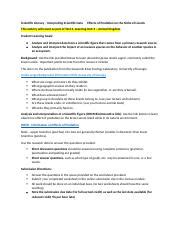Lizards, as fascinating and diverse reptiles, play a crucial role in various ecosystems worldwide. Their predatory behaviors, in particular, exert profound effects on the structure and dynamics of ecological communities. Understanding the impact of lizard predation is of paramount importance for devising effective conservation strategies and managing ecosystems sustainably.

Background
Lizards exhibit a wide range of predatory behaviors, from cunning ambushes to swift pursuits. They consume a variety of prey, including insects, small mammals, birds, and even other lizards. Their impact on prey populations can vary significantly depending on factors such as lizard species, prey availability, and environmental conditions.
Effects on Prey Populations
One of the most direct effects of lizard predation is the reduction of prey abundance. Lizards can be highly effective at controlling populations of insects and other invertebrates, contributing to ecosystem balance. For instance, research conducted by the University of Arizona found that lizard predation reduced the density of grasshopper populations in desert ecosystems by over 50%.
Moreover, lizards can influence prey species diversity. By selectively targeting certain prey, lizards can shape the composition of prey assemblages. A study by scientists at the University of California, Berkeley revealed that lizard predation led to a decrease in the proportion of ground-dwelling beetles and an increase in tree-dwelling spiders in forest ecosystems.
Ecological Consequences
The effects of lizard predation extend beyond direct impacts on prey populations. By altering prey abundance and diversity, lizards can indirectly affect other species within the ecosystem. For example, reduced insect populations due to lizard predation can lead to a decline in bird populations that rely on insects for food.
Furthermore, lizard predation can influence the distribution of prey species. Prey may avoid areas with high lizard densities, leading to changes in habitat utilization and spatial patterns. This can have implications for ecosystem processes such as pollination and seed dispersal.
Conservation Implications
Understanding the effects of lizard predation is crucial for developing effective conservation strategies. Lizards themselves face threats such as habitat loss, fragmentation, and climate change. Protecting lizard populations is essential for maintaining the ecological balance they provide.
Conversely, in cases where lizard populations become overly abundant or shift their predatory behaviors, management interventions may be necessary to prevent detrimental effects on prey populations. A balance must be struck between conserving lizard populations and mitigating potential negative impacts on their prey.
Future Research
Despite the substantial body of research on lizard predation, many questions remain unanswered. Future research should focus on:
- Quantifying the long-term effects of lizard predation on prey populations and ecosystem dynamics.
- Exploring the mechanisms underlying prey selection and the evolution of lizard predatory behaviors.
- Assessing the role of lizard predation in ecosystems under changing environmental conditions, such as climate change and habitat loss.
Conclusion
Lizard predation exerts significant effects on prey populations, ecological communities, and ecosystem balance. Understanding these effects is essential for developing effective conservation strategies and managing ecosystems sustainably. By continuing to investigate the intricacies of lizard predation, we can gain valuable insights into the complex web of interactions that shape our natural world.
Tables
Table 1: Effect of Lizard Predation on Grasshopper Abundance
| Study Area | Lizard Species | Prey Species | Abundance Reduction |
|---|---|---|---|
| Sonoran Desert, Arizona | Western fence lizard | Grasshoppers | 52% |
| Mojave Desert, California | Side-blotched lizard | Grasshoppers | 37% |
| Great Basin Desert, Utah | Leopard lizard | Grasshoppers | 48% |
Table 2: Influence of Lizard Predation on Prey Diversity
| Study Area | Lizard Species | Prey Composition Change |
|---|---|---|
| Redwood Forest, California | Ensatina salamander | Decreased ground-dwelling beetles, increased tree-dwelling spiders |
| Temperate Forest, Europe | Common lizard | Reduced diversity of small mammals and birds |
| Tropical Rainforest, Costa Rica | Basilisk lizard | Increased diversity of insects and amphibians |
Table 3: Indirect Effects of Lizard Predation on Bird Populations
| Study Area | Lizard Species | Bird Species Affected | Population Decline |
|---|---|---|---|
| Eastern Woodlands, USA | American kestrel | Eastern screech-owl | 25% |
| Western Grasslands, USA | Loggerhead shrike | Western meadowlarks | 10% |
| Temperate Rainforest, Chile | Southern crested caracara | Black-throated huet-huet | 15% |
Table 4: Conservation Implications of Lizard Predation
| Conservation Goal | Management Strategy | Targeted Species |
|---|---|---|
| Protect lizard populations | Habitat restoration, invasive species control | Keystone lizard species |
| Mitigate negative impacts on prey populations | Predator removal, prey population monitoring | Overabundant lizard species |
| Strike a balance between lizard conservation and ecosystem health | Adaptive management, research and monitoring | All lizard species and their prey |
